Lake Nakuru National Park surrounds the small alkaline lake that bears that name, which is right outside the town of the same name about 145km north and west of Nairobi.The town is the fourth largest in Kenya with about 200,000 people. The park was formed, as many were, in the early 1960’s primarily to protect the shallow soda lake that varies between 5 and 30 square kilometers depending on how much rain falls in the area. The park has grown over time to take in about 188 square kilometers, or about 75 square miles. For a quick comparison, that’s about twice the size of San Francisco at 44 square miles, 3/4 the size of Fremont, which is about 100 square miles and about 5 times the size of Idaho Falls, at 15 square miles. It’s not real big as national parks go, but it’s packed with wildlife.
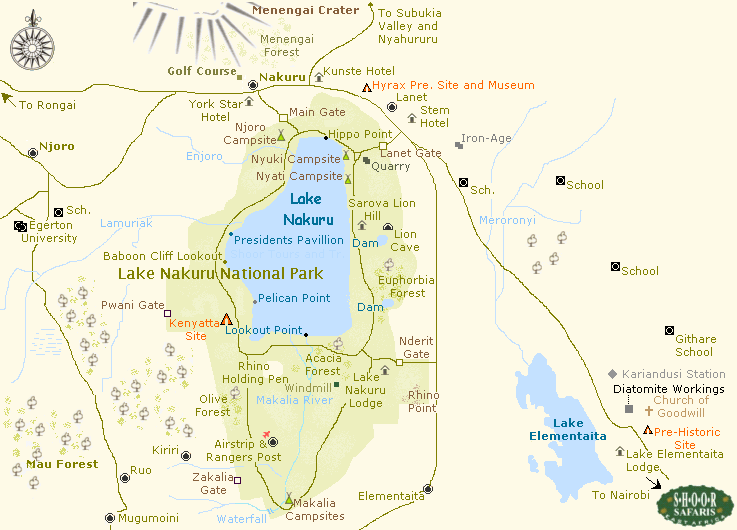
Baboon Cliff Lookout is indicated on the map as being exactly on the edge of the lake. As you can tell from the following picture, that’s not exactly accurate. It’s on a road that’s not shown on the map, but is located to the left of the shown road that goes completely around the lake. Note the pink line that runs all along the edge of the lake. Can you guess what it is?
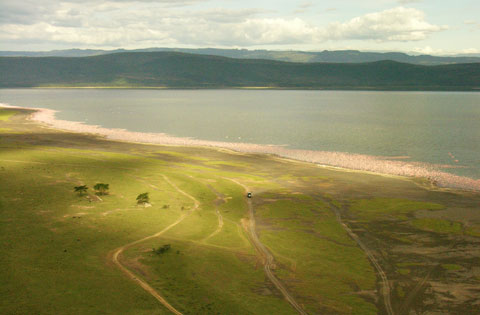

Here’s a little closer view. Does that help?
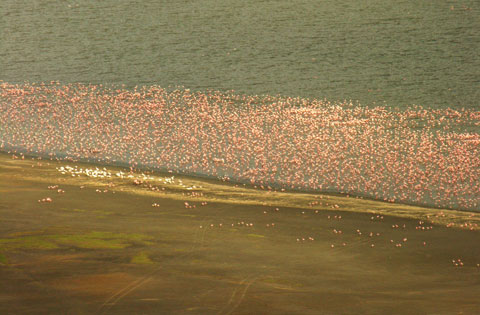

You’re absolutely right! It’s wall-to-wall flamingos. And what characters they are!
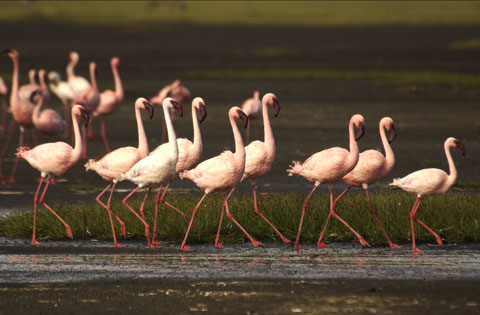

We’ll get into that later, but, for now, what a ruckus they raise! At the lake there is a constant buzzing, humming, thrumming sound like a vast engine. Of course, a tiny microphone producing sound for a tiny speaker can hardly do it justice, but at least you will get a hint of what they sound like by clicking on the play button below the picture. This little movie will also give you a hint of how many of them there are, too.
When they’re on the ground, they’re very social, walking around like a bunch of suburban housewives out for their morning stroll and yakking like crazy as they walk. I have a lot of still pictures that show this, but the motion of it makes it at least one dimension more fascinating, so click to play this little clip.
And here is a still shot of the girls jogging through the neighborhood.
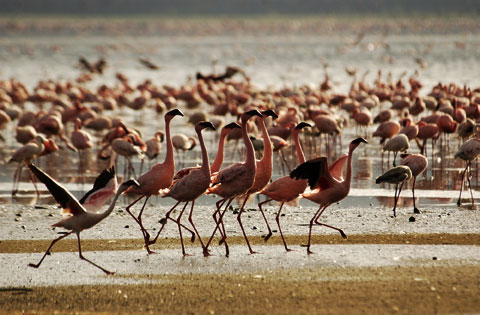
And carrying on an intense conversation at the same time.
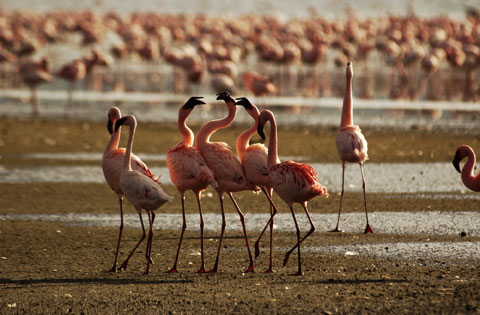
Meanwhile, not all is fun and games. Not only do the flamingos have to worry about the red queen calling on them for a game of croquet, but there are also jackals and hyenas who want to invite them to supper. This clip shows the hyenas scoping out the huge flock. This sequence is from the still camera so it has better resolution but is not as smooth as if it had been many frames per second. Double-click on the picture to see the sequence. Click to stop.
Of course, they can’t catch the birds easily, unless there’s some bird or birds that can’t fly. I have no idea how often that happens, but the hyenas have an easy way to find out. They just lope out into the flock and those that can fly, do, whereas those that can’t, wait for dinner. Pretty much all alone. I couldn’t get close enough for a good shot of this, but you can see in this sequence just how much havoc the hyenas raise by running out into the flock. Then, too, they may just have fun putting so many birds up into the air. It really was quite a sight. More birds than I have ever seen at one time here in the States, even at places like Camas National Wildlife Refuge with all its geese, swans and ducks. Once again double-click to start and click to stop the sequence
Besides the pinkos, there are a huge number of pelicans, relative newcomers to the lake since it was stocked in the early 1960’s with a type of small tilapia that they love. Actually, they have a bit of a pink tinge to them, too, although this shot doesn't show it off well.
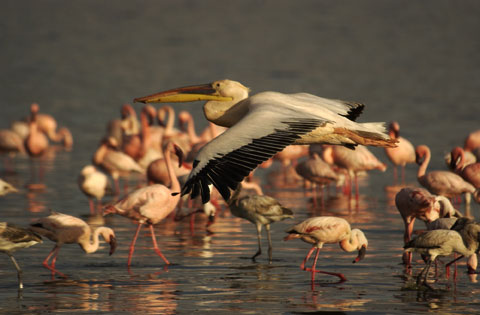
I was also particularly taken with the kingfishers. The ones we saw were mostly backlighted and the pictures didn’t turn out as well as I would have liked, but I have put some together into a movie that gives some sort of idea why I enjoyed them so much. The top is a higher speed and the bottom a lower speed version of the sequence.
And I did get a few good shots of them.
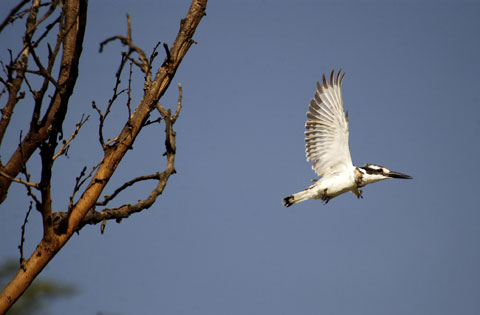
And how could I fail to mention those elegant crapeaters, those scavenging, scrooge-like maribou storks? They’re fabulous! I really wanted to get some pictures of them along the streets of downtown Nairobi, but they had more nerve than I when it came to walking those streets, so I had to settle for walking with their brethren and sistren along the edge of Lake Nakuru.
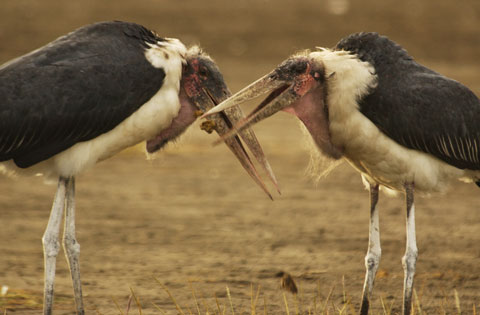
It’s funny how languages can use the same word for different things. Nakuru is a good example. It means "Dust or Dusty Place" in the Maasai language. On the other hand, in Kiswahili, Nakuru means "Waterbuck Haven". We went through a terrible dusty stretch on the road to Nakuru, but once we got there I didn’t see much in the way of dust. In contrast, there seemed to be plenty of waterbucks and their little flying friends.
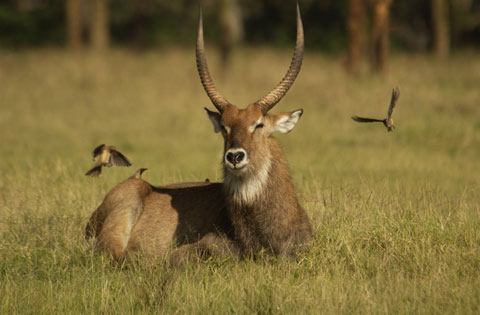
Nakuru is also a special refuge for both the black and white rhinoceros. I think we only saw the black ones (although they’re really both grey and the shade of grey primarily depends on the mud they bathe in), but we saw several of those, maybe a half dozen. From youth I had always thought of them as some of the most dangerous African big game animals. Having seen them in their native habitat, I find it difficult to imagine someone bragging about shooting one. It just doesn’t seem like a sporting proposition. I don't mean they couldn't be dangerous if you got one riled up, but, as they stand there munching grass, they reminded me of a sort of huge turtle without a shell and how could you bring yourself to shoot that?
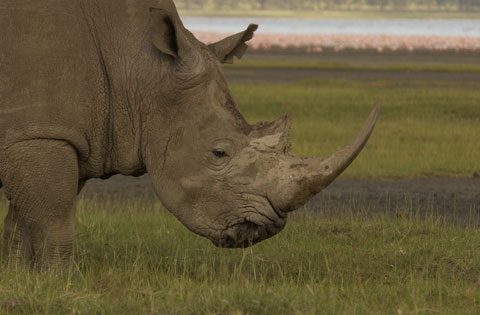
The Cape Buffalo, though, does strike me as a dangerous customer, whether you’ve shot and wounded him already or not. I’m sure Francis McComber would agree with me, if only he could.
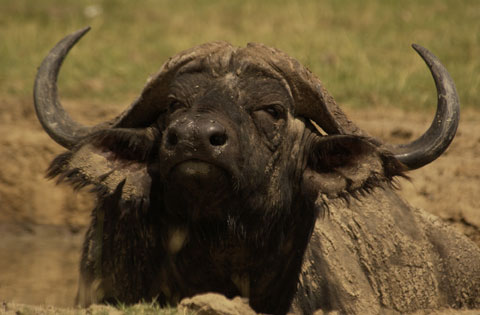
One of the two species in the picture below was the funniest we ran into in the park, but it’s hard to say which, they since they’re so closely related.
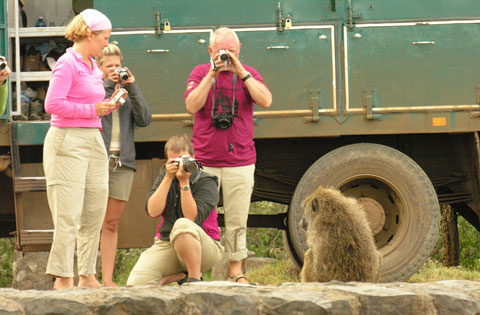
Finally, our most thrilling encounter, was, probably our most ethereal one. This leopard came and went in less than a minute, but what a wonderful, unforgettable minute it was.
